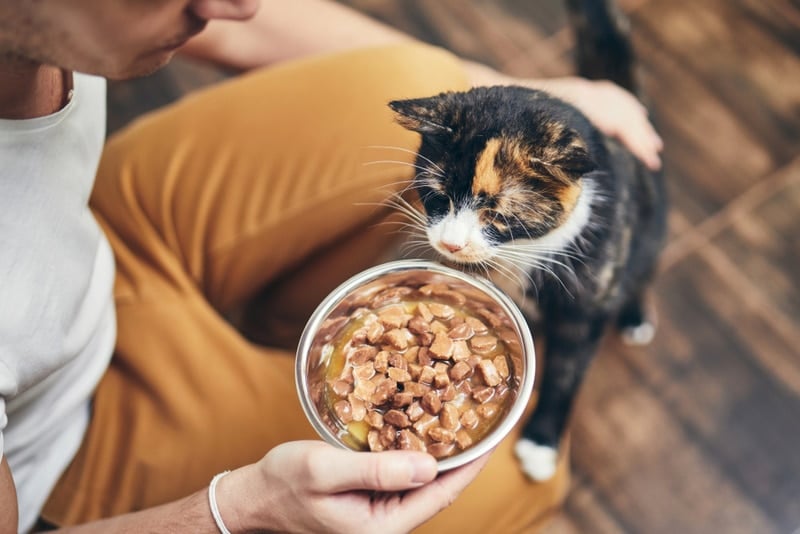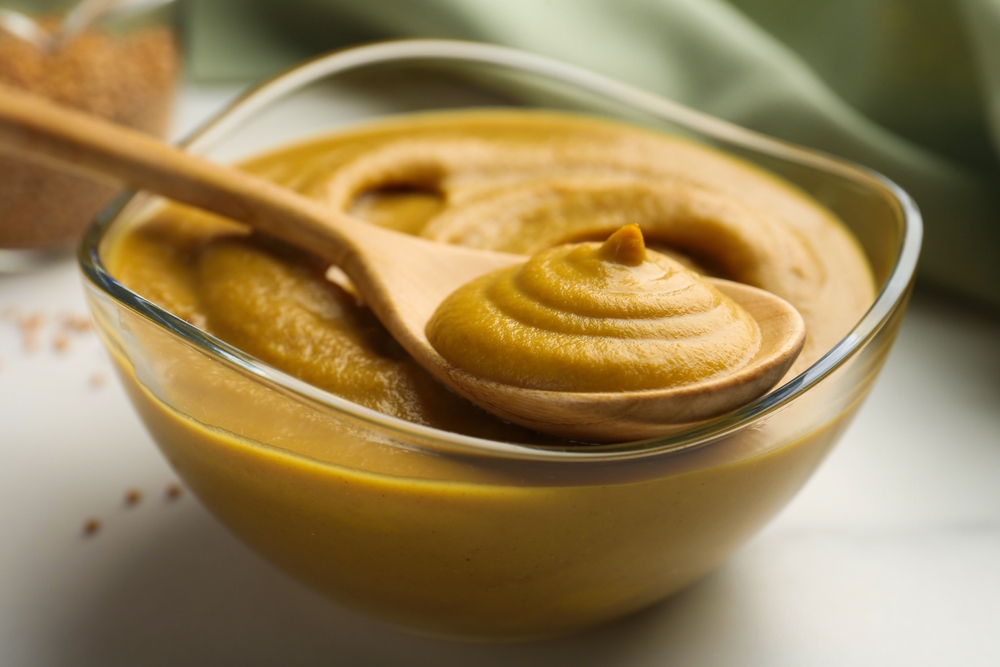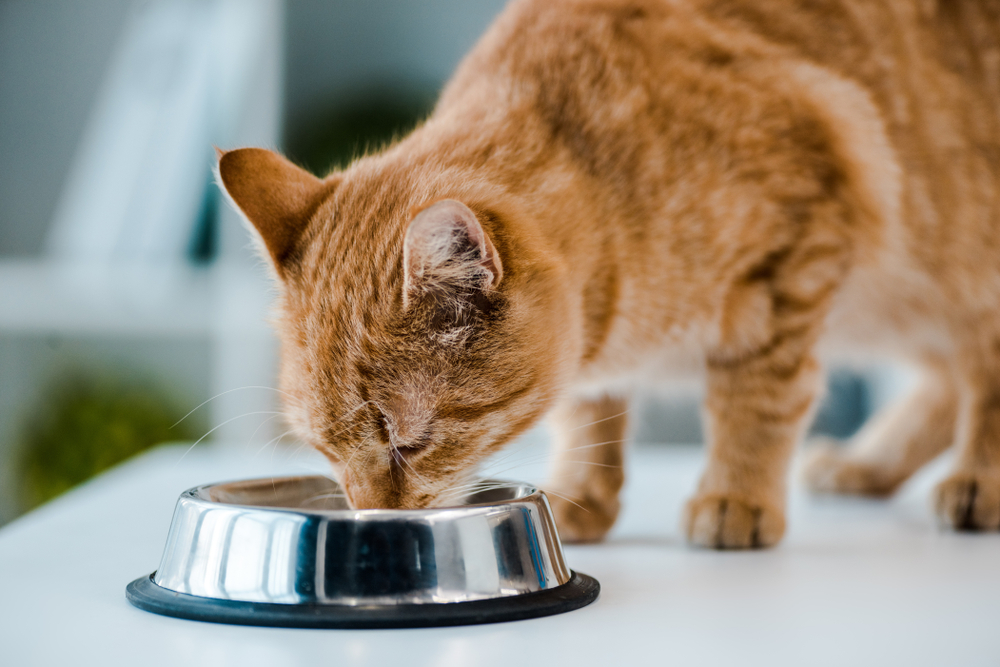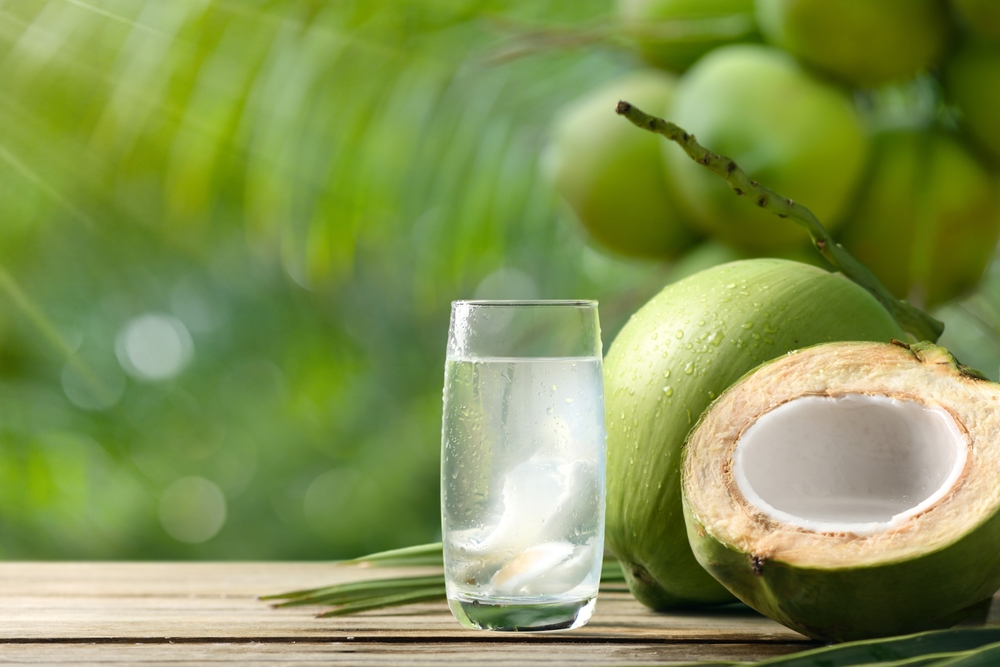Cat food manufacturers follow strict guidelines to produce safe products, but after they leave the factory, they can become damaged or improperly handled during shipping. The last thing you want is to feed your cat spoiled food, but you don’t want to throw it away and waste your money if it’s still good to eat.
Because of that, you need to be able to identify spoiled cat food so you don’t accidentally feed it to your cat, and the best way is to look for these common signs of spoiled cat food.

The 8 Signs That Your Cat Food Has Gone Bad
1. It Looks Weird
Trust your senses. Food can spoil in several ways, and you can often tell by looking at it. If the food is starting to look strange or is a different color, play it safe and don’t feed it to your cat.
2. It Smells Bad
When something doesn’t smell right, there’s a good chance there’s something wrong with it. However, you need to know what fresh cat food smells like to use this as a test. Because while you might not like the smell of the food, if it’s supposed to smell like that, there might be nothing wrong with it.
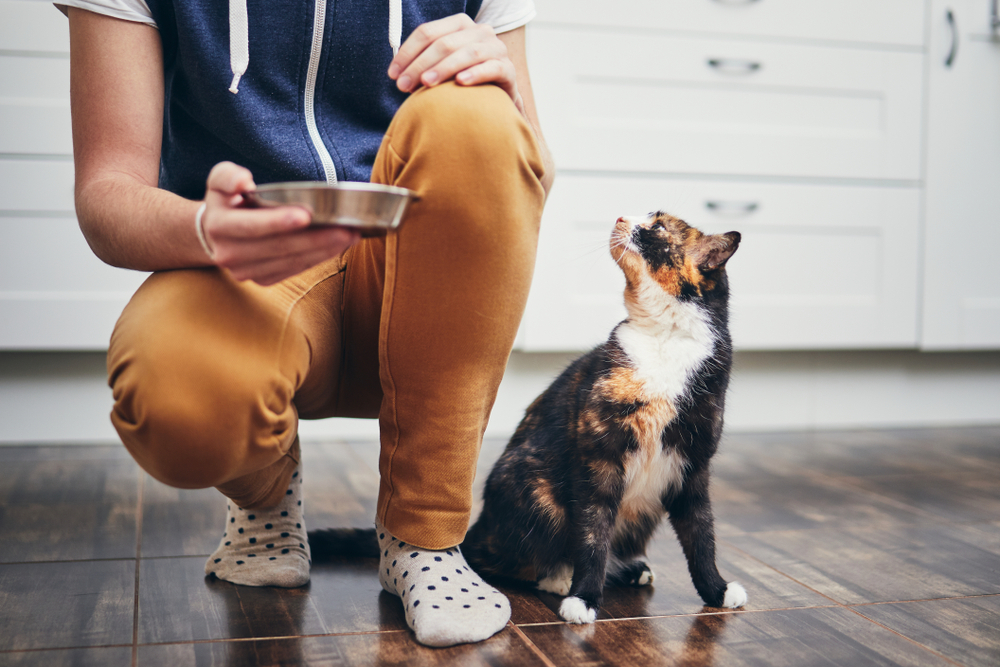
3. It’s Past the Expiration Date
One of the easiest ways to tell if your cat food has gone bad is if it’s past the expiration date. While you can’t assume that the cat food will still be fresh up to the expiration date after you open it, you don’t want to feed it to your cat if it’s after that date.
An important distinction to make here is to know the difference between a “best before” or “best by” date and an expiration date. A “best before” or “best by” date indicates that the food may still be consumable after it has passed the date, but it may no longer provide the nutrition per the claims on its label.
An expiration date, on the other hand, means the food is no longer safe to be consumed and should be discarded. We don’t recommend feeding your cat food when the date has elapsed on the “best before, “best by,” or expiration date label; even if the food hasn’t gone bad, it will not provide your kitty the nutrition they need for growth, maintenance, or recovery.
4. There’s Mold
If you see mold in your cat’s food, it’s time to throw it in the trash. It’s not safe to cut the mold out and serve it to your cat. If mold is forming, all the food needs to go.
Mold can cause serious health problems, and it only starts to form on spoiled food. If the food is in a clear container and appears moldy, do not open the container. Doing so can release fungal spores all around you.
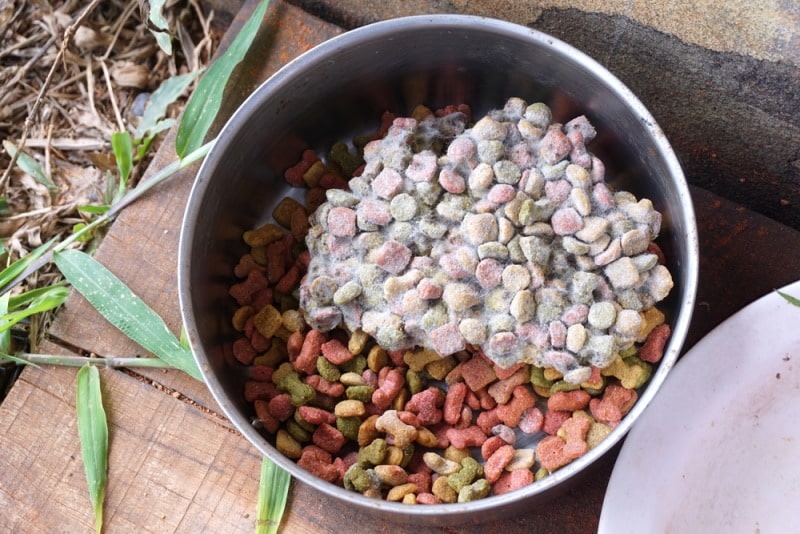
5. The Texture Is Different
When you give your cat their food, you generally have a pretty good idea of how it should feel. If the texture isn’t right, it’s likely spoiled.
6. Unusual Color
One of the first things that start to change when food spoils is the color. Often, the food will begin to give off more of a gray or green appearance, but no matter the color shift, it’s time to get rid of it. You know how your cat food should look, so if the color is a bit off, it’s a bad sign.
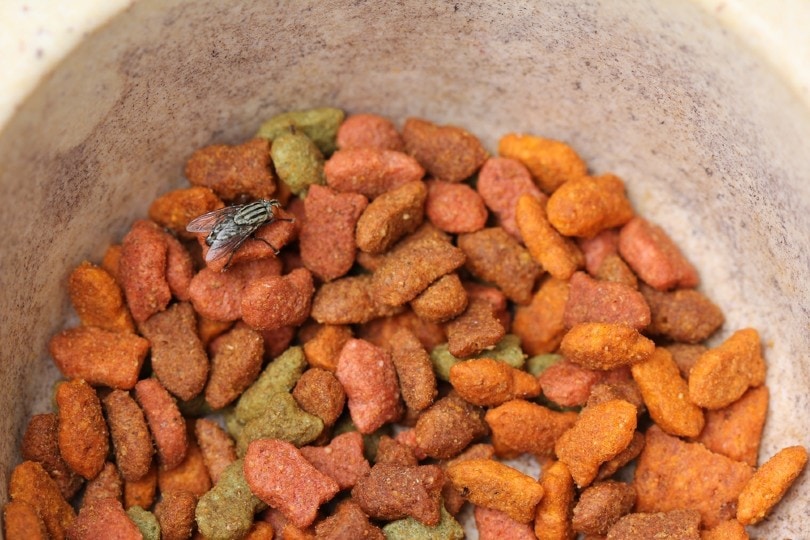
7. It’s Sticky or Slimy
There are two ways the texture of the food can change if it spoils: it can start to feel sticky or slimy. Sometimes, a slimy coating will sit on top of the food, which is a sign of spoilage. It depends on what type of cat food you use, whether it will become sticky or slimy, but either way, you’ll want to throw it away and get fresh food for your feline.
8. Your Cat Won’t Eat It
If your cat usually their food quickly but all of a sudden won’t touch it, there’s a good chance there’s something wrong with it. It might not taste right to your cat or have an unusual smell.
If your cat is usually a great eater, it is a surefire sign the food is bad. But if your cat is usually a picky eater, that might not be the case. Get to know your cat, and you’ll have a better idea of what it means when they’re refusing to eat their food.
Interestingly, cats can taste amino acids (the building blocks of protein) in their food. If your kitty seems exceptionally picky and refuses some cat food, check the protein content since it may not be adequate for your kitty.
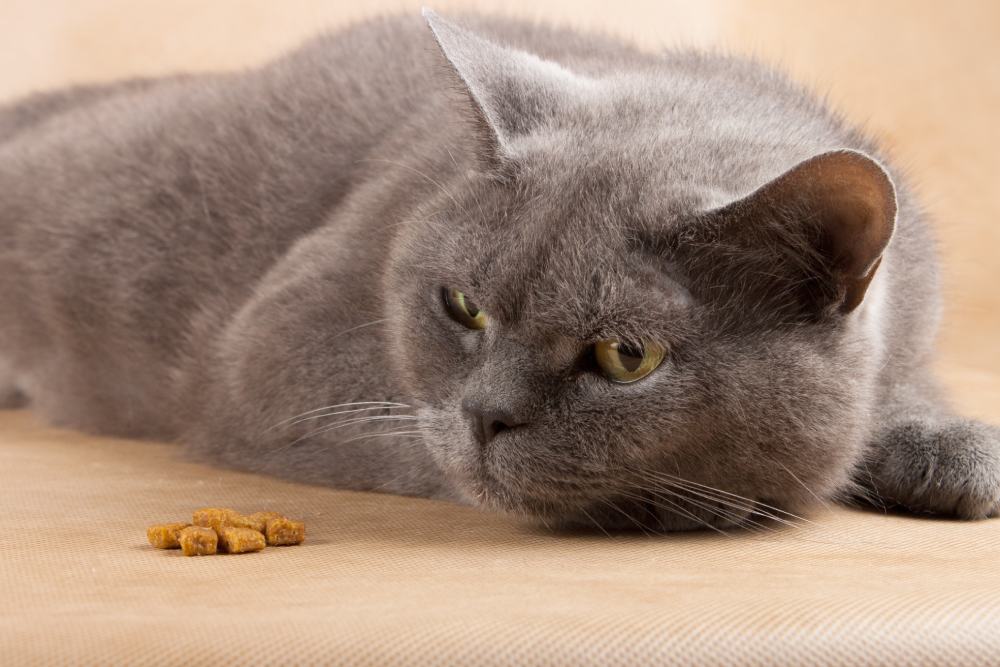

What To Do If Your Cat Eats Spoiled Food
If you think your cat has ingested something they shouldn’t (such as food that has gone bad), the best course of action is to take them to a veterinarian immediately for a checkup. It’s unsafe to wait for signs of digestive distress to develop since, by the time the signs present themselves, your cat’s system has been somewhat compromised. Earlier veterinarian intervention provides your cat with the best possible prognosis from a food poisoning episode.
Although some cases of digestive issues are mild, it is always best to err on the side of caution and not gamble with your kitty’s health by “waiting it out” to see how bad they react to something they ate.
Cats are experts at masking pain and illnesses, and a kitty who appears healthy after eating spoiled food might just be appearing so instinctively and may become sicker than one who receives prompt veterinary care.
Your vet can assess your pet and formulate a stabilization, treatment, and management plan to help them recover if they’ve ingested spoiled food.
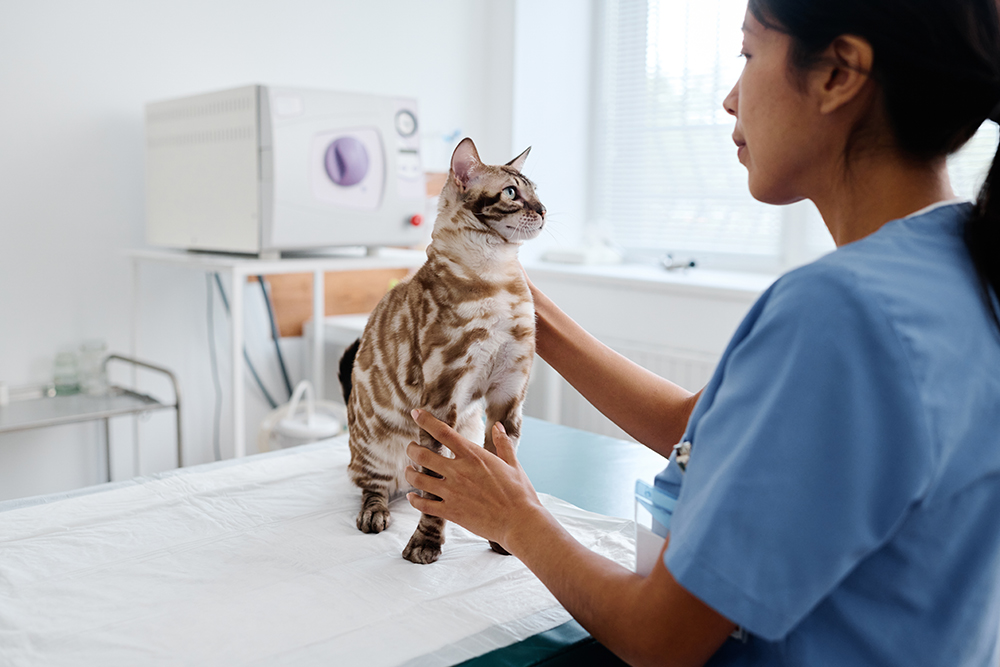

Conclusion
While you don’t want to spend more money on cat food than you need to, you should always play it safe because of how serious feeding your cat spoiled food can be. Don’t feed your cat any dry or wet food that might be spoiled. Instead, stick with brands you know are fresh and safe, even if it means taking an extra trip to the store and spending a bit more.
Your cat is counting on you to feed them food that’s safe to eat, so don’t take any chances with their health!
See Also:
Featured Image Credit: Jaromir Chalabala, Shutterstock

